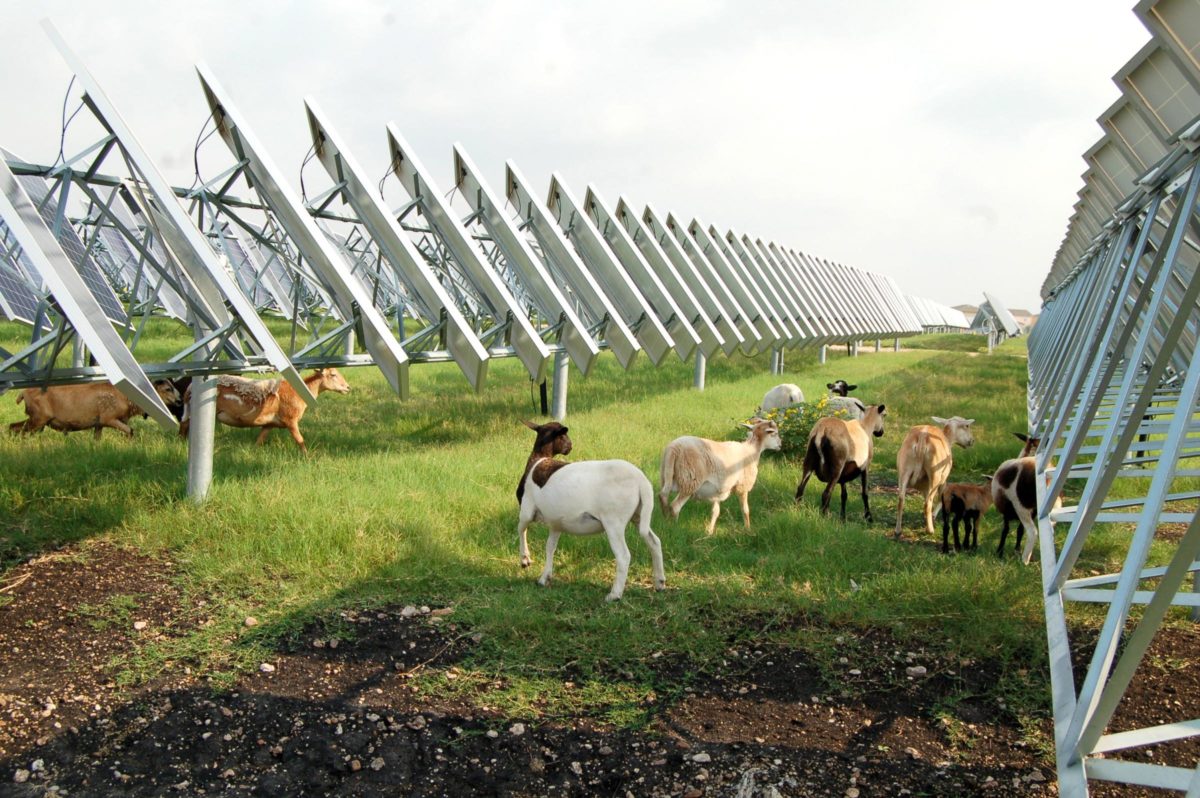The Connecticut Siting Council approved agricultural and energy co-use at two of Greenskies Clean Energy’s solar facilities, enabling the firm to expand its agrivoltaics reach. Both projects were unanimously approved by the council, and endorsements from the State Department of Agriculture affirmed the projects will not negatively impact the farmland soils beneath.
A 5MW solar farm in East Windsor, CT was approved, and will host sheep to maintain local vegetative growth. And, a 2.9MW Orange, CT solar farm is set to host organic vegetable growth and sustainable farming practices.
The Orange project will occupy about 6-7 acres of land at Treat Farm. The soil is ideal for organic vegetable growth, which will take place in about 34 rows of 14-foot wide aisles between parallel rows of solar modules. Greenskies expects the facility to be built in the fall, and for food production to begin spring 2023.
The array will feed Connecticut state colleges and universities through a virtual net-metering agreement. The virtual net-metering project enables the schools to use the energy generated at a remote site to offset its energy consumption bill at other locations.
Agrivoltaics is a development strategy that is sensitive to land-use concerns and helps support local farming practices. “Agrivoltaics is an opportunity for local farmers to contribute to an emerging field that has so many positive implications for the future of agriculture and renewable energy in an increasingly volatile climate,” said Stanley Chin president and CEO of Greenskies.
(Read: “Could agrivoltaics feed our demand for clean energy?”
Research conducted by the US Department of Energy’s Sandia Labs found that the practice overcomes the separation of food and energy production and can increase land productivity by 35-73%. “The idea is to create a mutually beneficial environment for agricultural activity and solar energy production,” said Chin.
AgriSolar Clearinghouse
In November, the National Center for Appropriate Technology launched the nation’s first AgriSolar Clearinghouse, a platform to connect farmers, ranchers, land managers, solar developers, and researchers. The clearinghouse features a library of peer-reviewed information, videos, podcasts, news, and a forum for agrivoltaics discussion. More than 30 partners and stakeholders in renewable energy, sustainable agriculture, national energy laboratories, the Smithsonian, and leading universities participated in its creation.
Research by Oregon State University found that solar and agricultural co-location could provide 20% of the total electricity generation in the United States. Wide-scale installation of agrivoltaics could lead to an annual reduction of 330,000 tons of carbon dioxide emissions while “minimally” impacting crop yield, the researchers said. The paper found that an area about the size of Maryland would be needed if agrivoltaics were to meet 20% of U.S. electricity generation. That’s about 13,000 square miles, or 1% of current US farmland.
Arizona State University also conducted a study and found “probable barriers to wider adoption” that ranged from mechanized farming and harvesting to the additional costs of elevating PV arrays to allow for food production.
The clearinghouse project was funded by a three-year, $2 million cooperative agreement with the U.S. Department of Energy Solar Energy Technologies Office.
This content is protected by copyright and may not be reused. If you want to cooperate with us and would like to reuse some of our content, please contact: editors@pv-magazine.com.









Fascinating! We have created semi-transparent solar cell 2 by 4 ft producing 88 to 58 watts per panel while going from 10% to 40% transparency. Made only in America!